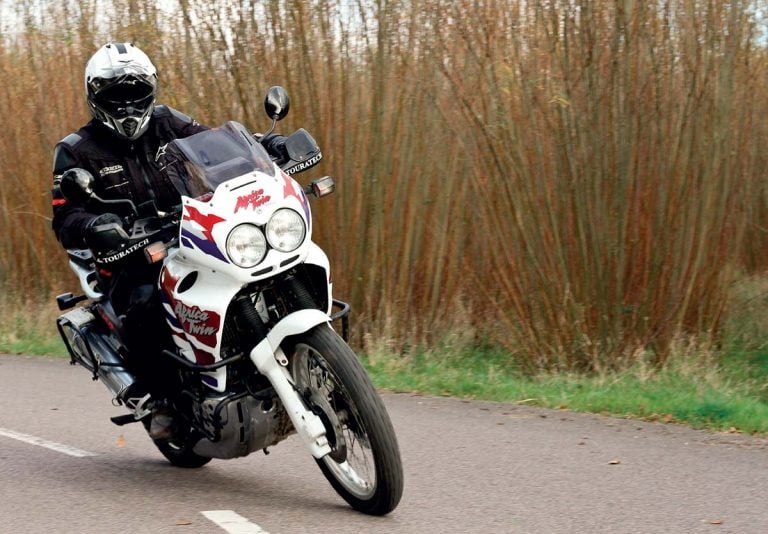JULIAN CHALLIS Climbs Aboard A Motorcycling Icon To Discover How A Vintage Africa Twin Compares To Today’s Adventure Bikes
Whether you are a relative novice or an experienced motorcyclist, a racetrack hero or a dedicated off-roader, there’s one thing that we can all agree on: Honda builds iconic motorcycles.
From the humble Honda Cub, the best-selling motorised vehicle ever manufactured, to the achingly beautiful RC30, a bike that still can make grown men weep. Or maybe you would think of the first CB750, a motorcycle that in the late ‘60s redefined road bikes and inadvertently put the final nails into the coffin of the already terminally ill British motorcycle industry.
However, for adventure riders, the icon that we all know and love is of course the Africa Twin, a bike that has risen, fallen, and risen again like the proverbial phoenix. Since it’s relaunch in 2016, the Africa Twin has returned to its position as the best-selling Japanese adventure bike ever made, it’s worldwide sales and popularity only eclipsed by the mighty BMW GS.
Since the CRF1000L was released, the bike has sold a staggering 87,000 units worldwide in just four years, outstripping sales of the bike’s previous incarnation during its 13 years of production by over 14,000. The bike is not just a motorcycling icon, it’s been an incredible commercial success too.
Old School
So, in ABR’s ongoing series looking back at the bikes that have defined and set the direction of adventure motorcycling, it was only a matter of time before we had to revisit the mighty Africa Twin. With so many of ABR readers choosing to pick either the CRF1000L, or it’s updated younger sibling the CRF1100L that was launched under the sun-kissed skies of Sardinia last autumn, it’s clear that the big Honda still ticks the same boxes it did back in 1988.
Indeed, with so much popularity, older examples of the Africa Twin are becoming increasingly more sought after and inevitably increasingly more expensive. And on the evidence seen at the ABR Festival, there are still plenty of them in regular and spirited use across the UK and the world.
So, for our third retrospective review, we reached out to the wide and wonderful world of the UK’s vibrant and varied Africa Twin community to find a prime example of Honda’s work. Frankly, we could not have come up with better than the 1998 example owned by Will, an enthusiastic and ardent fan of the model who has owned and ridden this, and other Africa Twins, across the UK and further afield into Europe and beyond.
But don’t think we’ve settled on a show pony example, some concourse machine that only goes out on high days and holidays when the sun is out. Far from it. Will’s beloved Africa Twin is used all year round, from motorway munching to green laning, commuting to fully loaded continent crossing.
He even takes it to the infamous Stella Alpina hill climb up the Colle del Sommeiller in the French Alps, slugging the bike up impossible inclines just for a laugh. It’s our kind of bike and Will is our kind of rider.
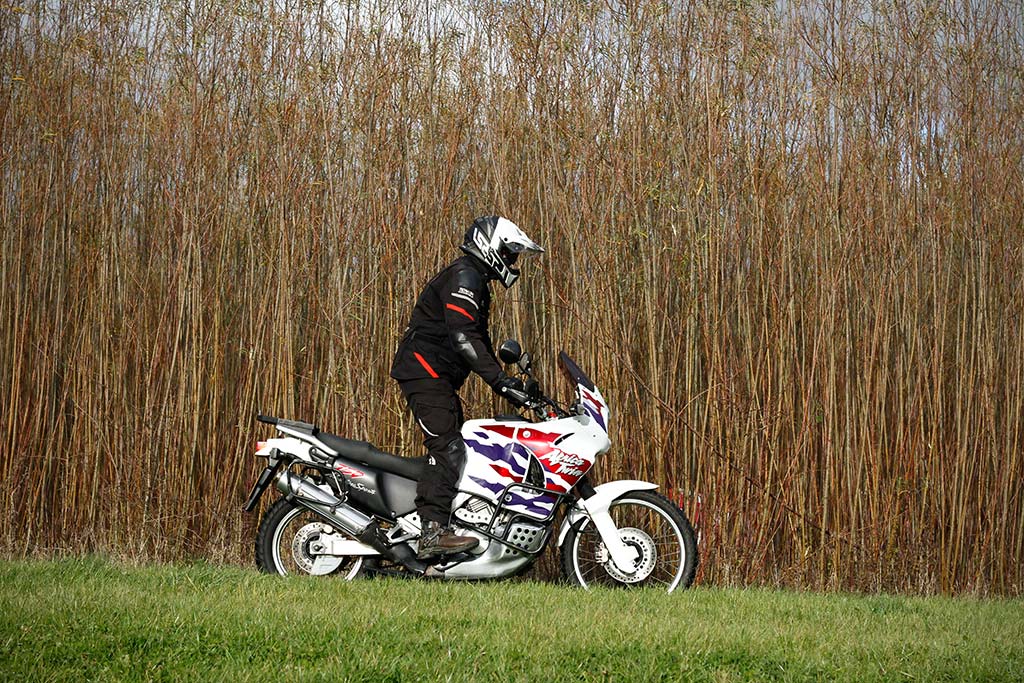
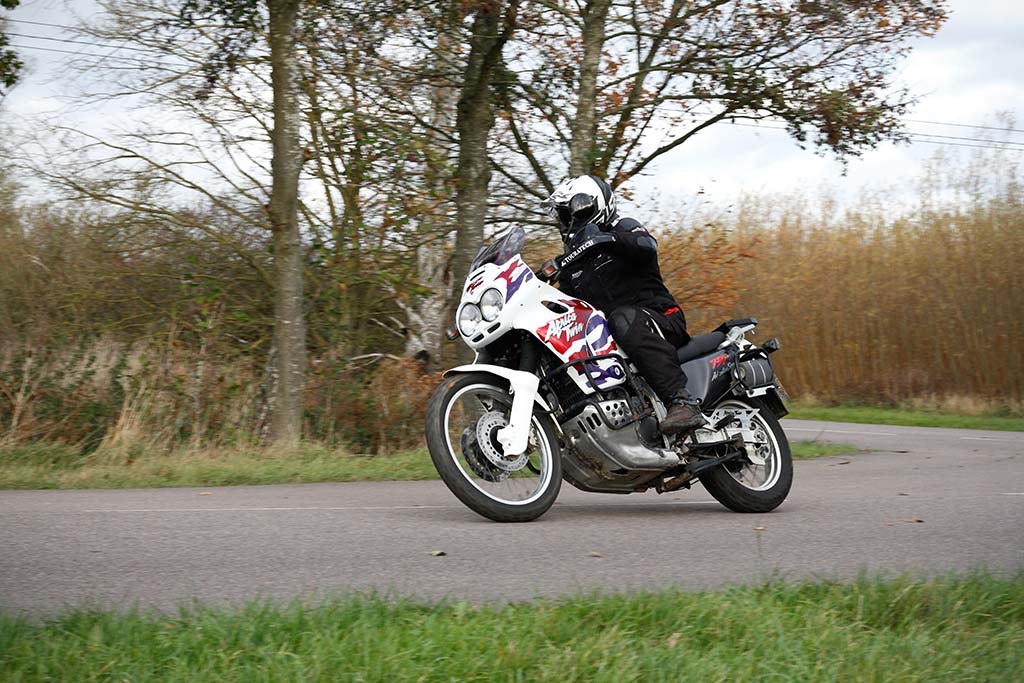
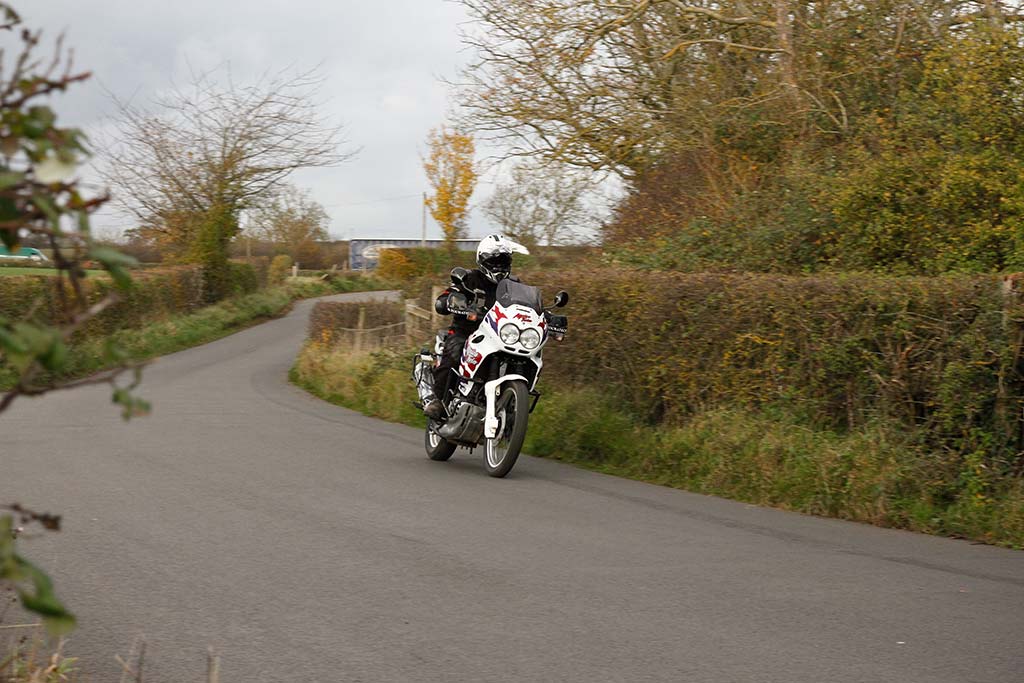
Dakar Heritage
Before we look at our retro machine in detail, let’s rewind to the origins of the Africa Twin, well before this well-loved 1998 version rolled off the production line in Japan. Back in 1977, a year after getting lost in the Ténéré desert on the Abidjan-Nice Rally, motorcycle enthusiast and racer, Thierry Sabine, had the idea of running a race from Paris to Dakar along the same lines as the London, Sahara, Munich event.
It would take a couple of years to get the logistics together, but in 1979, a total of 182 brave souls set off from Paris on a journey that would take them more than 6,000 miles over every possible type of terrain you can imagine, before finishing in the Senegalese capital. The podium was a predictably Gallic triumph with Alain Génestier taking the win on four wheels in his Range Rover, whereas it was the former French enduro champion Cyril Neveu who took the first motorcycle win on Yamaha XT500.
Neveu won again on the Yamaha the following year and, after losing out to Hubert Auriol on a BMW R 80 GS in 1981, the Frenchman returned to win once more in 1982, this time on a Honda XR550. However, BMW was about to find a winning formula, going on to dominate the event for the next three years.
Clearly irked by the Bavarian hat trick, Honda’s racing division got to work, putting Neveu and fellow Frenchman Gilles Lalay on the payroll and equipping both of them with the now legendary NXR750, an all-out desert racing weapon designed to do just one job, win the 1986 Dakar. And that’s exactly what it did, propelling Neveu to his fourth win, with Lalay taking second just behind.
Neveu would go on to take the NXR750 to a follow-up victory the next year, with the Italian Eric Orioli winning on the bike in 1988, and Lalay finally climbing to the top step the next year. The Honda seemed unstoppable.
First Edition
PRICE: From around £4,000 depending on condition
ENGINE: 52-degree, liquid cooled V-twin, with SOHC and three valves per cylinder
CAPACITY: 742 cc
GEARBOX: Five speed with chain transmission
POWER: 61bhp @ 7,500rpm
TORQUE: 62Nm @ 6,500rpm
SUSPENSION: Front: 43mm air-assisted telescopic fork, conventional orientation, not USD. Rear: Centrally mounted rear shock with Pro Link, adjustable for preload and compression damping
BRAKES FRONT: Twin 276mm discs with two-piston callipers. Rear: Single 256mm disc and one-piston calliper
WEIGHT: 207kg (dry)
TANK CAPACITY: 23l
SEAT HEIGHT: 860mm
Even before the NXR750 had taken its fourth and, as it turned out, final win at the infamous event, Honda had realised the commercial potential of their machine, and indeed the adventure styling of the bike. BMW had already launched and had showroom success with its fledgling GS range following their own successes in the Paris Dakar, and for Honda, the path forward was clear.
In 1988, the first Africa Twin was released to an eager motorcycle market, fitted with a slightly smaller 650cc V-twin engine, but crucially, bristling with all the design cues, off-road prowess, and hutzpah of Neveu’s race-winning machine.
Even by today’s standards, the original Africa Twin is a fantastic looking machine, and if you’ve got one, then it’s going to go up in value on a daily basis. And perhaps more importantly, it’s cooler than a penguin’s instep.
Buoyed by the success of the first incarnation, in 1990 Honda upped the capacity by 100cc to match the original NXR750 and, although the bike had a raft of improvements and refinements, Honda didn’t mess with the rugged look and killer stance of the Africa Twin.
Three years later, the third and, as it turned out, a final major redesign of the XRV750 gave it a new frame and a wider, taller profile. It was a calculated response to the bikes increasing popularity with buyers who wanted to indulge in touring across the world, clearly loving the Africa Twin’s continent-crossing prowess.
But for all this success through the mid-’90s, the popularity of the adventure bike gradually waned as we headed for the new millennium and, perhaps seeing the bike as the past rather than the future, Honda finally ceased production of the model in 2001. After 73,000 bikes sold, the once all-conquering XRV slipped gently into the back catalogue, apparently consigned to the history books.
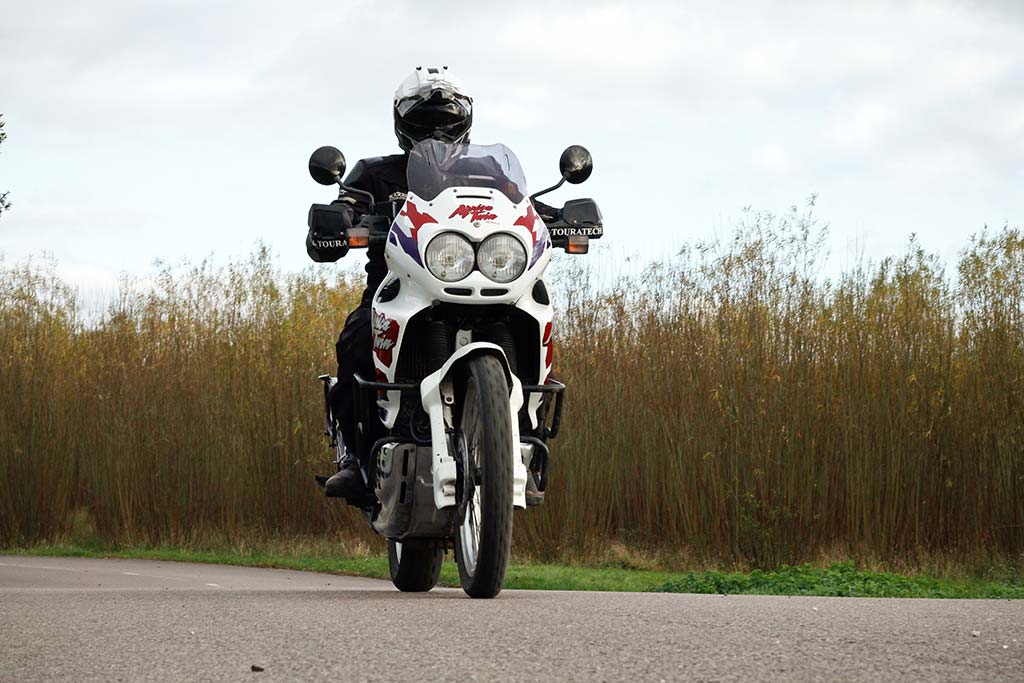
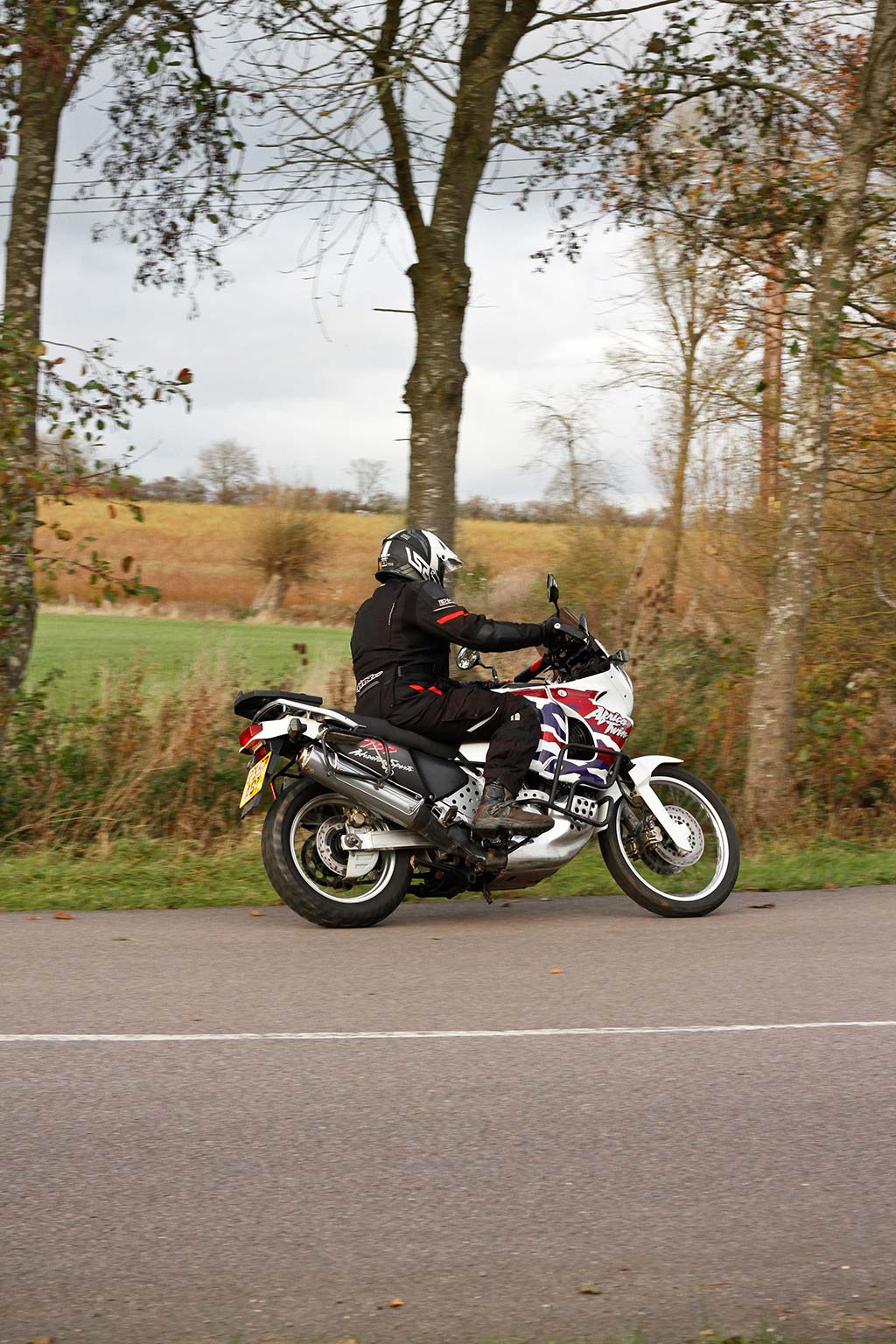
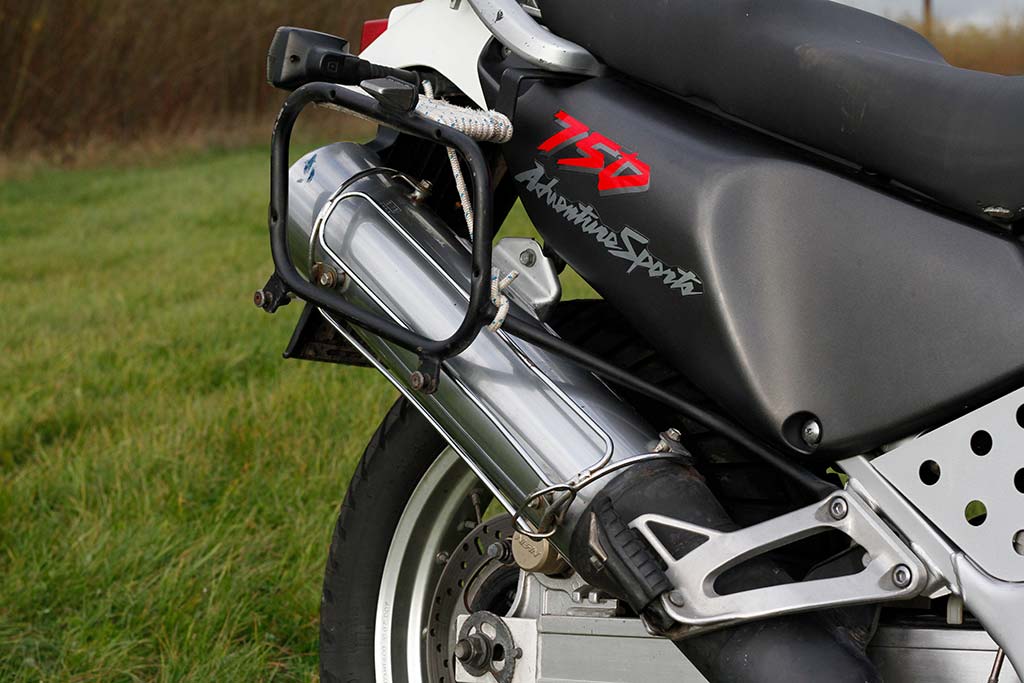
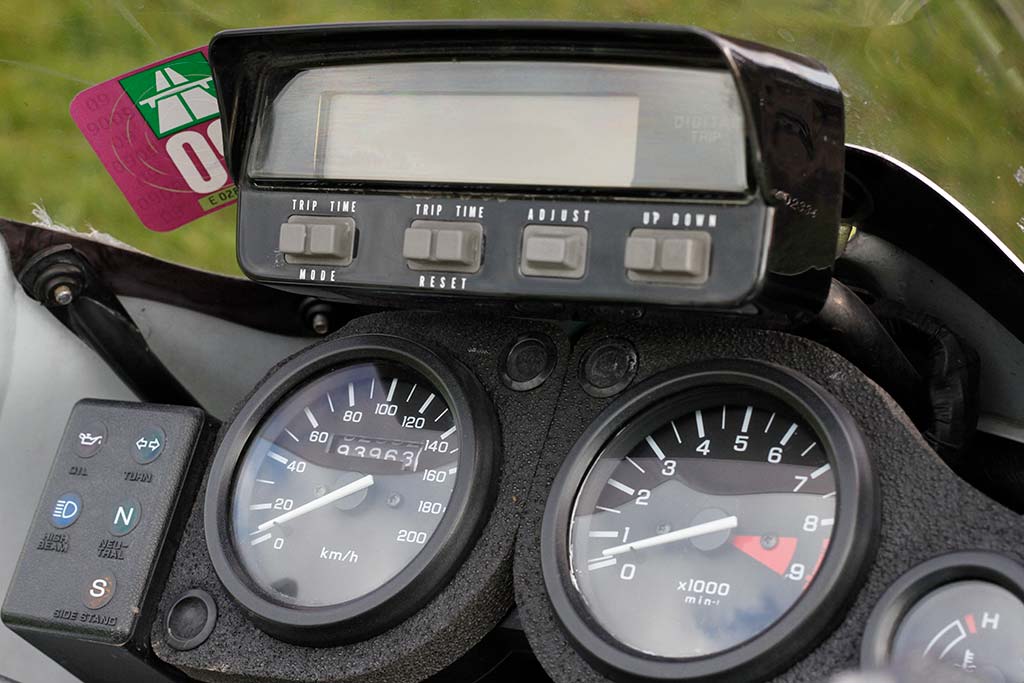
Present And Correct
Fast forward to England in November 2020, the day before the second coronavirus-inspired national lockdown ground the country to a halt, and our test bike is wheeled out of Will’s van into the ABR car park on a sparkling autumn morning. The bike is a 1998 RD07P model and, although five years on from the upgrade in 1993, it’s not visually that much different.
The massive 23l tank bulges towards the front of the bike and there’s that iconic ‘90s twin headlight fairing with its stubby screen. Below the screen is the one-piece look of the front mudguard and fork protectors, while at the back, the chunky original end can follow the line of the side panels to the surprisingly minimal back end. Jeez, it’s a good-looking bike.
With the photos and general faffing out of the way, I get the chance to actually put some distance on the bike and form a true impression of how it rides and stacks up to the 2021 Africa Twin Adventure Sports incarnation, currently in the ABR long-term fleet. Straight away, the wide bars and lack of clutter in the refreshingly open cockpit is a stark contrast to today’s machines. My classic bike’s limited number of buttons and lack of a TFT display look positively minimal. Looking for the traction control? That’ll be your right wrist.
Ride Time
Thumbing the starter for the first time, the silky-smooth engine spins into life with a satisfying thrum emitting from the bike’s stock exhaust. Honda had perfected the V-twin to almost an art form by the time this bike had rolled out of Japan.
Setting off onto the roads leading away from ABR towers, the 1998 bike feels instantly likeable. Like most adventure bikes, that feeling of weight and size disappears as soon as the wheels start turning, and the Africa Twin is no different. Despite having almost the full 23 litres of unleaded in the conventionally mounted tank, the deep flanks take much of the weight down alongside the motor, negating any feeling of high weight either on the road or indeed off it.
Once on the sweeping A46 heading out towards Alcester and Evesham, I can open the taps on the Honda and the bike responds beautifully, lifting its skirts and setting off with a satisfying surge from that gorgeous motor. Whereas the modern Africa Twin models have turned their backs on the original format, the 1998 has the beautifully compact 52-degree, liquid-cooled V-twin, running three valves per cylinder and a single overhead cam engine.
In terms of power, the bike put out a modest 61bhp when new, so not exactly groundbreaking at the time and certainly pretty low by today’s standards for a 750, but the Africa Twin was never about raw power, whether back in the ‘90s or indeed now.
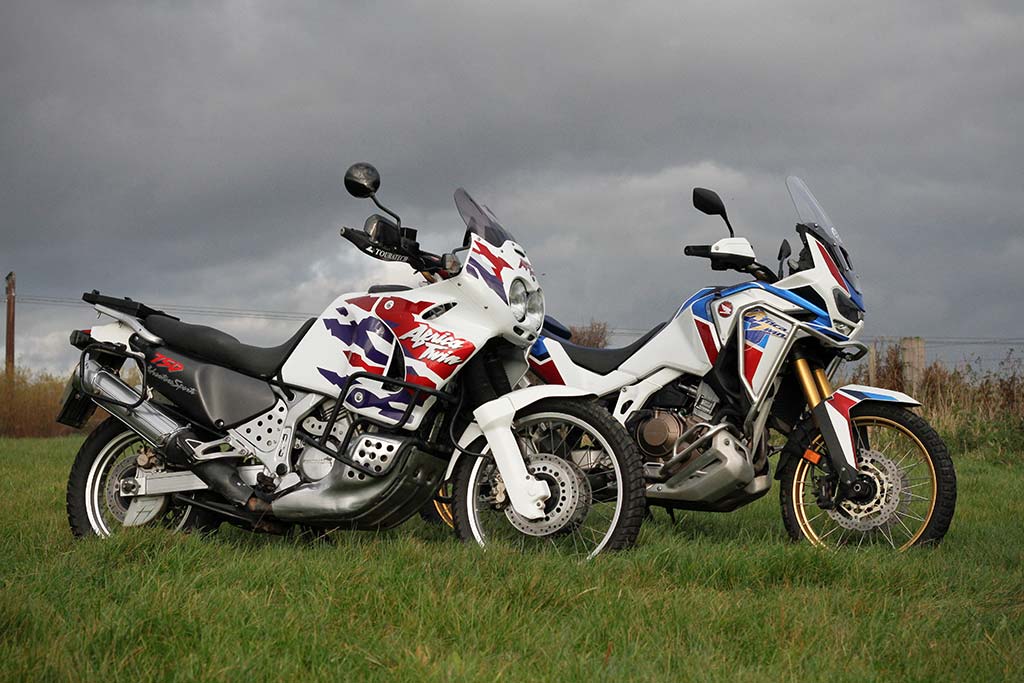
Power Play
What is evident on this bike is that it’s all about the torque. You get the best from the motor running somewhere between 3,000-5,000rpm and using every one of that 62Nm of grunt to waft you through the landscape. Honda quoted a top speed of just over 115mph, but you’d have to be a brave soldier to try that back in 1998, let alone some 22 years later. But with the A46 calling for nothing more enthusiastic than the national speed limit, being on the saddle of the old Africa Twin feels like a great place to be on a crisp autumn day.
Our test bike is a 1998 Honda XRV750 Africa Twin RD07P model. Keen-eyed readers will spot that it has a kilometre speedo, and this is because it’s originally from Germany. Owner Will is a bit of an entrepreneur, and a few years back, prices for Africa Twins in the country were lower than in the UK.
Armed with a fistful of Euros, he went on a buying trip, coming back with four similar aged XRVs and even a super rare XLV750R, the aborted model from before the first Africa Twin. Selling four of the bikes left him one for himself, paid for with the profits. Genius.
Will’s bike is still largely stock, save for Touratech handguards, crash bars, a rear rack, and as few other adventure riding farkles.
If you fancy bagging a classic Africa Twin for yourself, the Chequered Flag Cafe, in Cornwall, has a showroom with a selection of the bikes in stock.
That’s not all either. Alongside its impressive collection of vintage adventure bikes, there’s a café with plenty of options for a mid-rideout breakfast or lunch, and an on-site workshop where you can rent specialist tools or even enlist the help of the resident mechanic to work on your bike.
To find out more visit www.chequeredflagmotorcycles.com.
Upfront there are twin 276mm discs with a pair of twin pot callipers, and at the rear, there’s a single pot calliper and a 256mm disc. It’s pretty much state of the art for this age of bike.
OK, so they don’t boast the phenomenal stopping power of the 2021 motorcycle’s four-pot, ABS assisted, radially- mounted callipers on a set of discs some 34mm larger, but in fairness, the old bike’s anchors are still good enough for everything from smooth braking right up to eyeballs-on-the-visor stopping moments.
The rear brake on both bikes is interestingly still largely unchanged, the modern-day machine having an identical sized disc and single pot unit to get the job done efficiently and smoothly. As a guy that uses the rear brake a lot, I like that.
What is perhaps more of an achievement is how the 1998 Africa Twin manages this efficient and unruffled braking with forks that, by today’s standards, look as thin as pipe cleaners. Honestly, there are kid’s mountain bikes in Halfords with wider forks than a vintage Africa Twin.
However, the 43mm air-assisted forks are surprisingly competent on the road, and according to owner Will, for fairly spirited off-road shenanigans from gnarly country lanes to abandoned military roads in the Alps.
Yes, if you go full Dakar on the 1998 bike then things will get squirrelly pretty quickly, but this is a cunningly simple self-limitation process. If the bike is beginning to get out of shape and panicky, then you are going too fast. Old school technology relies far more on the rider than today’s preference for electronic rider aids to keep you upright.
There is still 220 mm of travel in the front fork, which is only a centimetre less than the 2021 bike, and at the rear, the centrally mounted shock delivers a respectable 214 mm of movement, which is just 6mm off the modern incarnation. The shock is adjustable for preload and compression damping, but for this, it’s a case of reaching for the C-spanner and screwdrivers rather than pressing a button on the bars. That’ll please the Luddites out there.
Sweeping Curves
With enough time spent on the faster roads, I peel off to take the twisties for the return loop back to the ABR office. The Africa Twin just gets better as it sweeps lazily from right to left, sending spirals of leaves in our wake. Amazingly, for a bike of this vintage, the wide-set gold and anodised braced bars are original stock items, providing a great feel to the well-balanced and effortless steering.
In keeping with the adventure heritage of this bike, there’s a fairly slim 90/90 profile, 21-inch, front tyre just like the modern Africa Twin, but when twinned with the Conti Escape rubber, the front end provides both good grip and feel on the autumnal roads. The rear wheel is a slightly smaller and slimmer 17-inch rim running a 140/80 hoop, which may limit your choice of knobbly tyres compared to the 150/70, 18-inch wheel found on the new version of the motorcycle.
What also makes the 1998 Africa Twin quite so Parker Knoll comfy on the side roads is its wide seat perched at a sensible height of 840mm. Sat down low in the bike, with the small screen offering just enough wind protection, carving through the Warwickshire lanes is a beautifully sensory experience. The big twin motor burbles along beneath me like the best soundtrack in the world.
Just before heading back, I locate a few sneaky lanes to test the Africa Twin’s much-celebrated off-piste manners. Boy, does it deliver. The width of that big tank immediately disappears the moment you stand, and the relationship between bars and pegs feels just right for everything from spirited blasts on gravel roads to even the tightest and slowest turns. This is a manoeuvre aided by those wide bars and the surprisingly tight turning circle of the big machine. I can see greenlaning on the old girl being an addictive experience.
Home Time
With the sun beginning to sink in the pale blue sky, the temperature drops swiftly and it’s time to return to base. Thanks to the local council’s badly timed temporary lights, the usually fast A46 has turned into an ill-tempered car park. But it’s no biggie for the Africa Twin, the bike showing easy commuting manners as I scoot out and around the stationary traffic, deftly dodging the stream of cars and lorries coming towards me. For a physically large motorcycle, it’s pretty agile for a daily commute.
Back at the van, I’m already regretting not having the bike for much, much longer. I’m also a bit sorry that my own collection does not include a vintage Africa Twin. While it is by no means a pristine example of Honda’s finest, Will’s bike is a true working classic with little of the bike’s original 1998 performance or ability diminished by 22 years and an impressive 57,787 miles on the clock. And given that mileage and the bike’s age, there is precious little corrosion or rust on the machine.
The V-twin motor is still beautifully fresh and punchy, complimented by a strong but flexible frame, near perfect ergonomics, and wonderfully evocative Dakar-inspired styling. Things have moved on in terms of just about every aspect of the modern Africa Twin model, yet the shared heritage and DNA of the original bike, and Neveu’s desert conquering machine, follows through whether your Africa Twin was made in 1988, 1998 or 2021. The Africa Twin is a truly iconic motorcycle, and we love it.
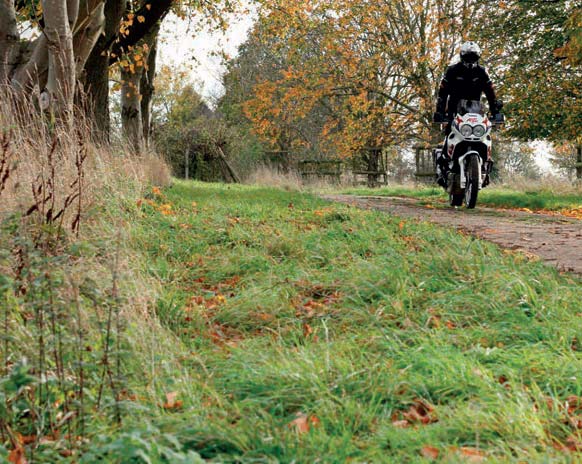 ABR Verdict
ABR Verdict
AS A COMMUTER
Getting yourself a vintage adventure bike just to submit it to the ignominy of hours of traffic congestion would be almost criminal. The Africa Twin will do it well enough if that’s your thing, but confining this adventure icon to an urban jungle is like putting a condor in a budgie cage.
AS AN OFF-ROADER
Again, this is a no brainer because any Africa Twin, whether old or new, is made to take on the rough stuff and have you grinning like a six-year-old on Christmas day. If you are going to invest in a slice of adventure biking history, don’t keep it in the garage and polish it. Instead, get that bad boy outside and mucky.
AS A WEEKEND TOURER
Now we are talking. The iconic Africa Twin is the perfect companion for weekends or even weeks away. Load up the top box, fill up the tank and the Africa Twin will reward you with uncomplicated riding pleasure from sunrise to sunset.
For the soundtrack, we’re going right back to 1998 and the equally iconic Mancunian genius of Oasis. The Masterplan is the track, and indeed the album of choice, and for Honda’s Africa Twin, it couldn’t be more appropriate.
AS A CONTINENTAL ROAD TOURER
Yes, the Africa Twin will be pretty damn good at continental touring. With plenty of luggage carrying potential, that delicious torquey V-twin motor, and all-day comfortable seat, you’ll only have to stop every 200 miles for fuel and coffee. However, you won’t want to rush it as you’ll be busy enjoying the day’s ride.
AS AN RTW OVERLANDER
The Africa Twin is easily capable of taking you around the world. In fact, at 57,000 miles, our test bike has already clocked up enough distance to circumnavigate the globe not once, but twice. Spares for the XRV are widely available worldwide but with Honda’s legendary reliability and build quality, you’re not likely to get through anything more complicated than tyres and fuel.
AS A PILLION CARRIER
Two-up touring is going to be a definite option on any age Africa Twin, but the older you go, the more basic the experience gets for both you and your squeeze on the pillion seat. If they get the adventure riding thing, then fine. If they are looking for where to plug in the hairdryer, maybe not.


